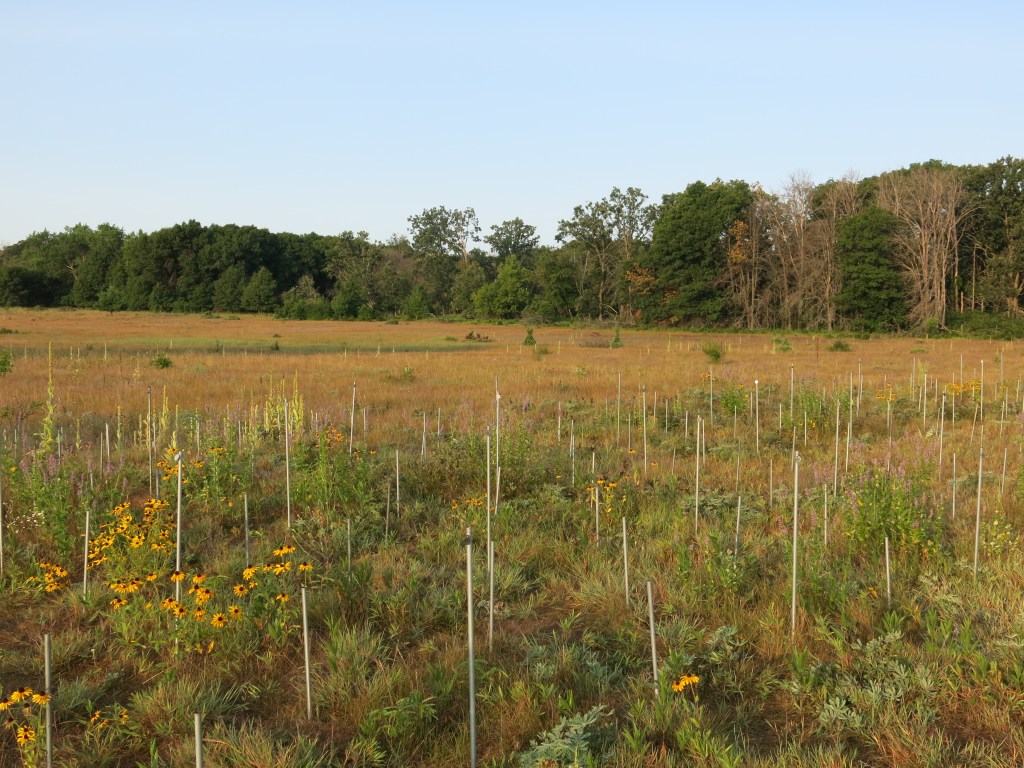In some very un-2020-like news (?!), I found out in December that my grant proposal to the European Research Council was successful. The words “ecstatic”, “ridiculously excited”, “over the moon” don’t begin to cover it. Safe to say, I didn’t sleep for several days after hearing the news.

My project, Predicting impacts of alien plant invasions on community diversity (AlienImpacts), aims to develop an approach for accurately predicting impacts of alien plants on floristic diversity, and to identify the circumstances under which negative impacts will occur, using temperate grasslands as a model system. The project combines experimental, observational, theoretical and quantitative approaches, and will enable us to undertake some incredibly exciting and important research.

Funded through the ERC Consolidator Grant scheme, the project will run for five years, officially kicking off in April 2021, and will support a team of researchers – including four postdocs (the ads of which will come out soon, so please watch this space!).
I’m incredibly grateful to the ERC for supporting this important work, to friends, colleagues and 2019 reviewers* who helped me hone the proposal, and to collaborators who will be involved in the research.
Project summary: The Anthropocene, the current geological epoch, is characterised by human-induced ecological changes, which have prompted a global biodiversity crisis. Human-introduced alien plants could help to offset native species loss, augmenting diversity and maintaining the services and capital that humans derive from nature. However, alien species that become invasive are themselves a key threat to biodiversity. Alien species thus presents a huge challenge for biodiversity conservation in the Anthropocene: should their arrival and establishment be inhibited or disregarded as they can potentially both exacerbate and ameliorate biodiversity loss? Coupling empirical and theoretical approaches, AlienImpacts will directly address this challenge by developing an approach for accurately predicting impacts of alien plant invasions on plant community diversity and identifying the circumstances under which negative impacts will occur. Using temperate grasslands as a model system, AlienImpacts will use innovative field experiments and global observations to systematically quantify – for the first time – how often, for how long, to what extent, under what conditions and in what ways alien plants can impact plant community diversity. AlienImpacts will develop mechanistic niche models, validated with empirical data from grasslands in North America, Europe and Australia, that will enable realistic scenarios of invasion biodiversity impacts to be forecast, now and in the future. Developing empirically accurate mechanistic models that predict invasions and their biodiversity impact is a highly ambitious goal. Its achievement will mark a step-change in ecological theory and understanding, will inform environmental policy and management, and address a critical research challenge of the Anthropocene: how to conserve the biodiversity of plants – the dominant life form on earth – under global environmental change.
[*2020 was my second attempt after falling short in 2019. Reviewer and panel comments from 2019 were incredibly helpful, and enabled me to strengthen my 2020 proposal –> so I owe them many thanks for their excellent feedback – thank you!]


One Reply to “”